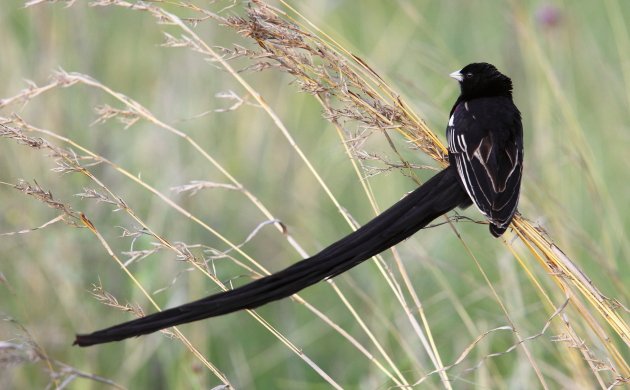
Virtually every region on earth has some exceptionally long tailed birds – Europe and North America have their magpies, Central America has arguably the most colorful of them all; the Resplendent Quetzal, South America has some extraordinarily adorned hummingbirds and long tailed macaws to name but two groups, Asia has its pheasants, such as the famous peacock and Great Argus (whose tail includes the longest feather of the avian world) and Papua New Guinea wins the award for the longest tail in proportion to body size with the amazing Ribbon-tailed Astrapia.
The remarkable Resplendent Quetzal photographed in Guatemala by Adam Riley
A Long-tailed Sylph, one of the America’s many long tailed hummingbird species, photographed in Colombia by Adam Riley
A Great Argus in full call, this species’ tail consists of the longest feather in the bird world. Photograph taken in Malaysia’s Taman Negara National Park by Adam Riley
The amazing Ribbon-tailed Astrapia of Papua New Guinea sports the longest tail in proportion to body size of any bird in the world. Image by Cuan Rush/Rockjumper Birding Tours
However Africa has more long tailed species than any other region, and this blog post celebrates a few of these fabulous birds. I’m not talking about ‘averagely’ long tailed birds with a few long tail feathers, like tropicbirds, bee-eaters, sunbirds or rollers, I mean birds with seriously long, great big trailing tails that seem to go on and on, and make a birder exclaim “WOW!”
Africa’s impressive Long-tailed Widowbird by Adam Riley
Widowbirds
Probably the most familiar of our long tailed birds are the widowbirds. These large seedeaters (belonging to the weaver family) are so named for the generally black plumage of the adult male, resembling a widow in mourning. They all belong to a genus called Euplectes , which also includes the colorful bishops. Five of the widowbirds have impressively long tails, but the most famous of them all is the aptly named Long-tailed Widowbird. Males of this large passerine sport a tail of over 16 inches (more than double their body length) that is proudly displayed to the dull females of the species in a spectacular, heavy and slow flapping aerial display, low over the grasslands of South and East Africa. The Afrikaans name for this bird is “Flap”, in recognition of this distinctive display. Once the breeding season is over these impressively adorned males lose not only their tails but also all their black plumage, and most of their other colors, in order to blend into the brown winter grasslands they inhabit.
A male Long-tailed Widowbird in heavy flapping display flight low over the grassland in South Africa by Adam Riley
Whydahs
The 9 species of whydah are brood-parasitic seedeaters belonging to the Indigobird family. All 9 sport impressively long tails, some narrow such as Pin-tailed and Shaft-tailed and others large and wide, such as Broad-tailed and Long-tailed Paradise Whydahs. Like the widowbirds, the whydahs only possess their long tails and bright plumages during the breeding season, and during this time the males perch prominently, showing their plumes off to all and sundry, especially their dull, streaky females. The whydahs do not build their own nests but parasitize those of waxbills and other small seedeaters.
A male Long-tailed Paradise Whydah showing off his tail plumes. Photo taken by Adam Riley in Zimbabwe
Sugarbirds
The two species of sugarbird make up the family Promeropidae, a family endemic to southern Africa. These two brush-tongued, long tailed birds feed on nectar, specifically that of Protea flowers, and have long confused taxonomists. They have been classified in various groups, from Australian honeyeaters, to starlings, sunbirds and babblers, before finally being placed in their unique family. Most easily located is the larger Cape Sugarbird, which may readily be found on the beautiful Protea blooms of Cape Town’s Kirstenbosch Botanical Gardens. The scarcer Gurney’s Sugarbird has a wider range through the mountains of eastern South Africa and Zimbabwe, and is reliably found on Sani Pass.
Cape Sugarbird, belonging to a family of birds endemic to Southern Africa, photo by Adam Riley
Mousebirds
The 6 species of mousebird are so unique and distinctive that not only do they form their own family (Coliidae) but also their own unique Order (Coliiformes) – the only Order of birds endemic to Africa! The mousebirds are a genuine evolutionary relic, having no close relatives. Despite being so special, these long tailed birds are commonly encountered yard birds, notorious for destroying soft fruit. Always occurring in family groups, they are fond of creeping about thick bushes and this habit, combined with their gray plumage, has coined their appropriately given name of mousebird.
A family of Red-faced Mousebirds take a drink in Namibia. Image by Adam Riley
Wood Hoopoes
The 9 species of wood hoopoe form another family of birds endemic to Africa. The larger, noisy species are known as wood hoopoes, but the slighter, more melodious ones are called scimitarbills. These long tailed, glossy birds are usually found in small family groups in savanna and forest habitats, where they forage along trunks and branches probing for insects and larvae hidden in the bark. The most familiar species is the Green Wood Hoopoe which can be a regular yard bird through much of Africa, and is easily detected by the loud cackling calls that the family group make, and which has earned them their Xhosa name of “Intlekibafazi”, meaning “laughter of women”!
Common Scimitarbills favor loosely barked trees for foraging. Image taken by Adam Riley in South Africa
A Green Wood Hoopoe using its tail for balance whilst foraging. Image taken by Adam Riley in South Africa
Other long tailed birds
Members of several other African bird groups also support impressively long tails. The amazingly long tailed White-crowned Hornbill is a west and central African rainforest species that emits a most frightful crescendo call, reminiscent of a hyena in full cry. They follow troops of monkeys through the forests, swooping down to snatch insects that the primates flush from the leaves.
The sought-after rainforest dwelling White-crested Hornbill sports an amazingly long tail. Image taken in Ghana by David Shackelford/Rockjumper Birding Tours
Several starlings have impressively long tails, such as the massive Bristle-crowned and stunning Golden-breasted Starlings. However, nothing compares with the amazing Long-tailed Glossy Starling that inhabits the broad-leafed woodlands of west Africa and to a lesser degree, Meves’s Glossy Starling of southern Africa.
Meves’ Glossy Starling is a common denizen of woodlands of south-central Africa. Image from Botswana by Adam Riley
The Magpie Shrike is so named for its wonderful long tail, which combined with its black-and-white plumage reminds one of a magpie. These gregarious birds are commonly found in woodlands and savannas of south and east Africa. They used to be called Long-tailed Shrike for obvious reasons!
A Magpie Shrike in song, image taken by Adam Riley in Kruger National Park, South Africa
And finally, one of my personal favourites, the smart and aptly named paradise flycatchers – this group of birds occurs across much of Asia, Africa and nearby islands, with several migratory and resident species. They are generally a rich orange on their upperparts, and many species proudly sport a tail up to 16 inches long. The widespread African Paradise-Flycatcher occurs throughout most of Subsaharan Africa and even into the Middle East. Its cheerful bubbling song is to me the epitome of good times, always making me smile whatever the circumstances! At the end of each winter I keenly await the spring announcement from the pair that annually breed in my back yard.
A male African Paradise Flycatcher showing off his tail. Image taken by Adam Riley in South Africa


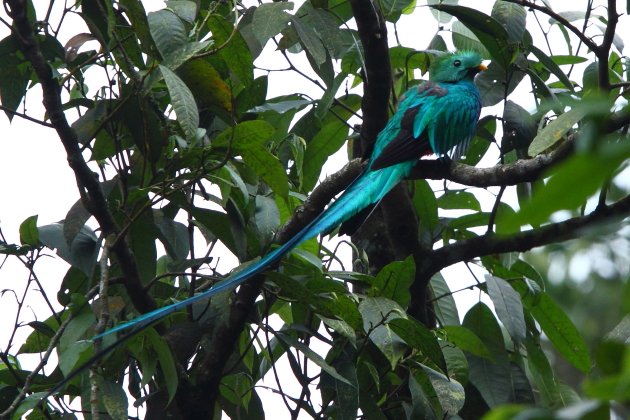
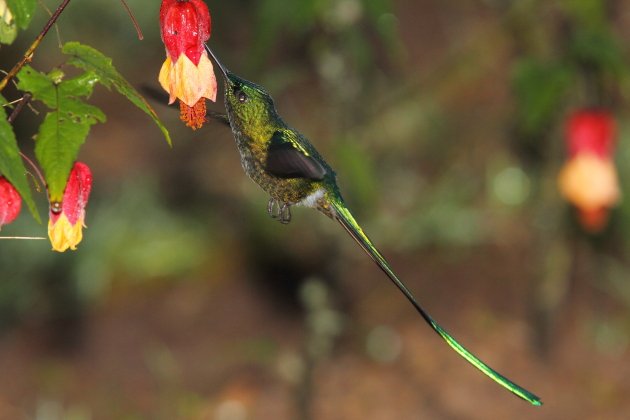
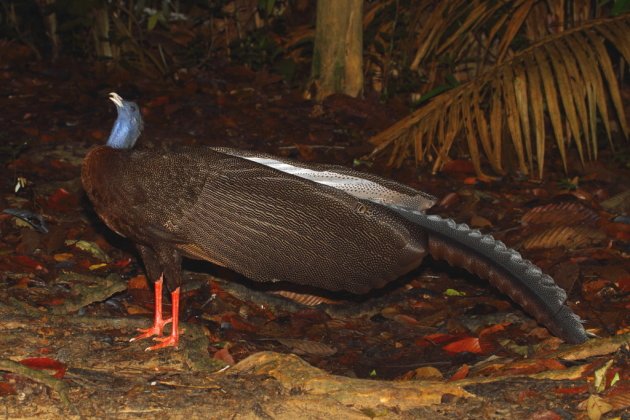
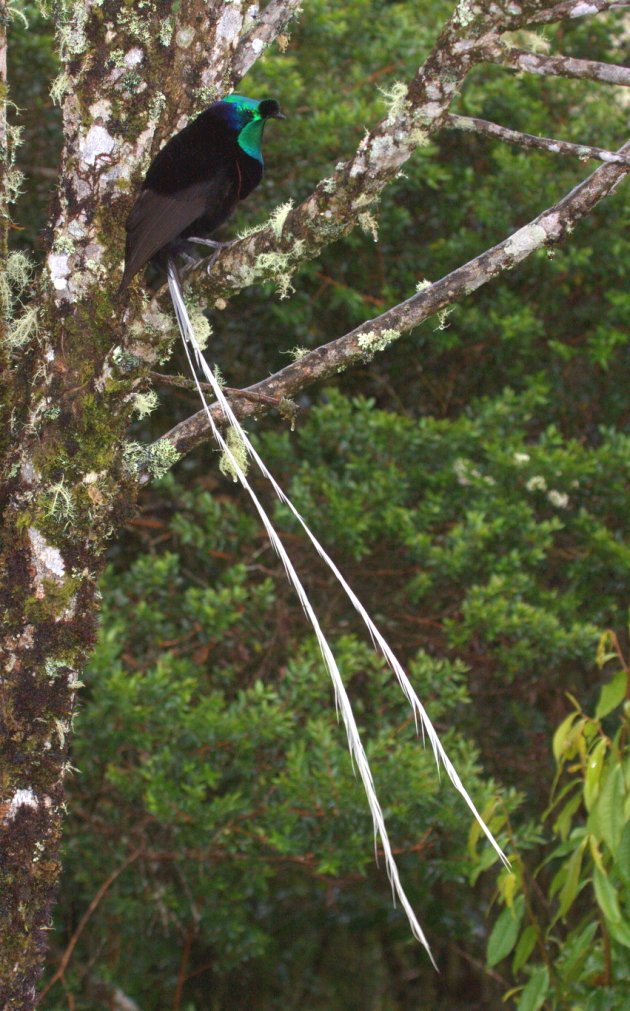

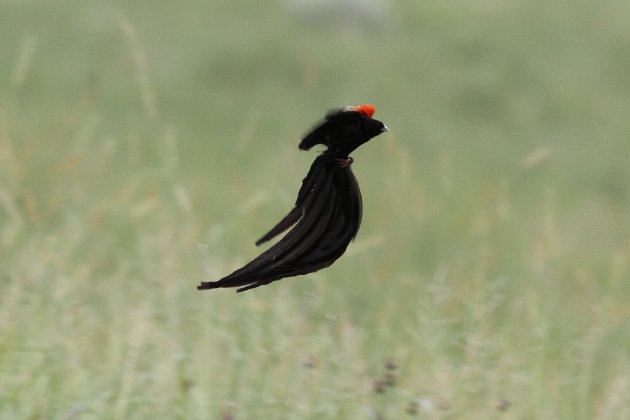
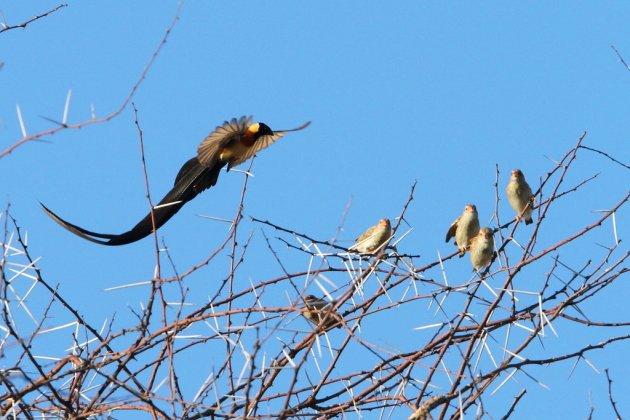
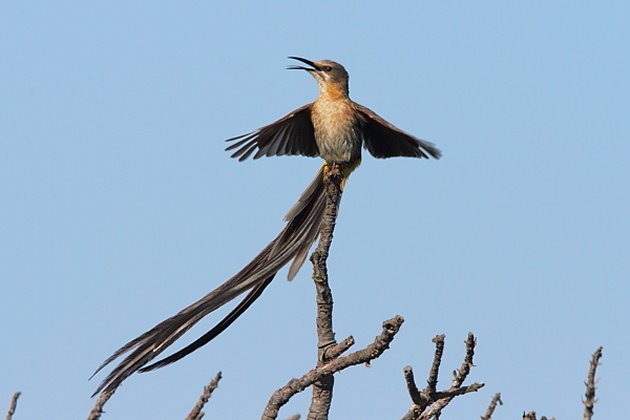
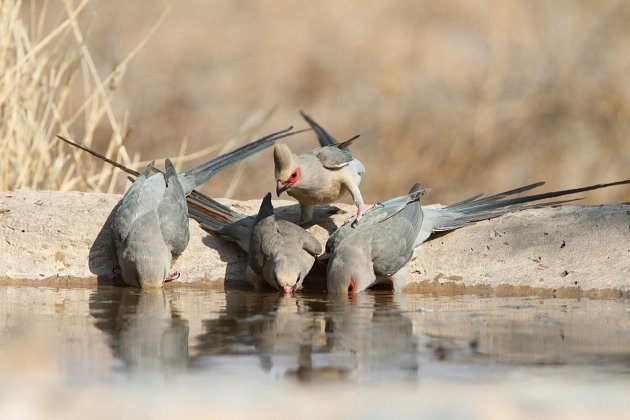
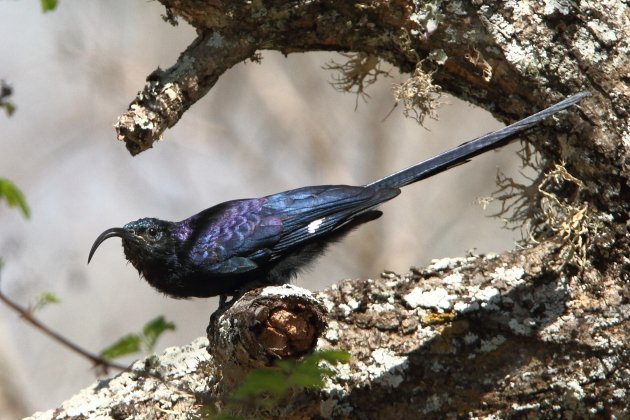
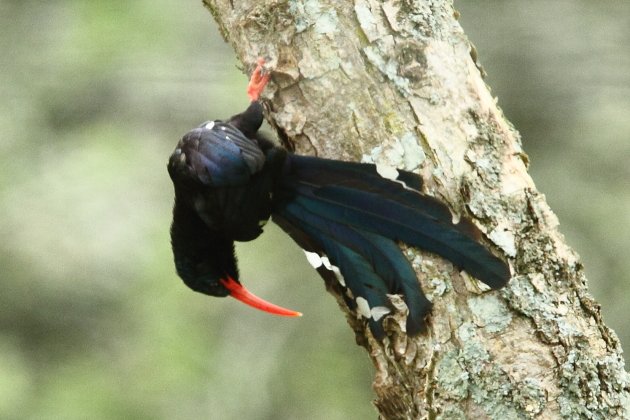
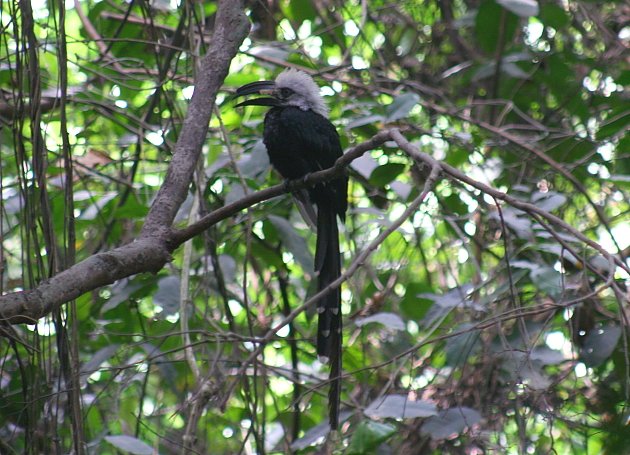
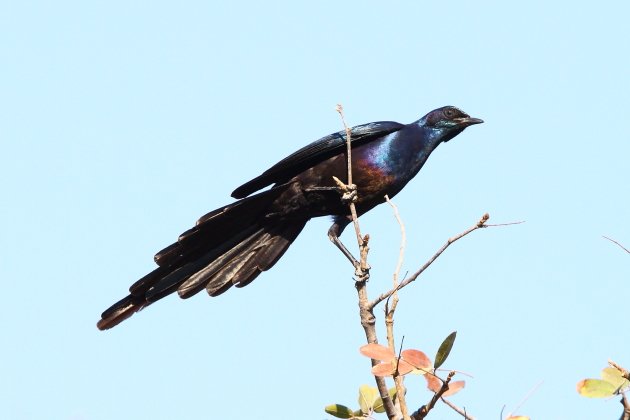
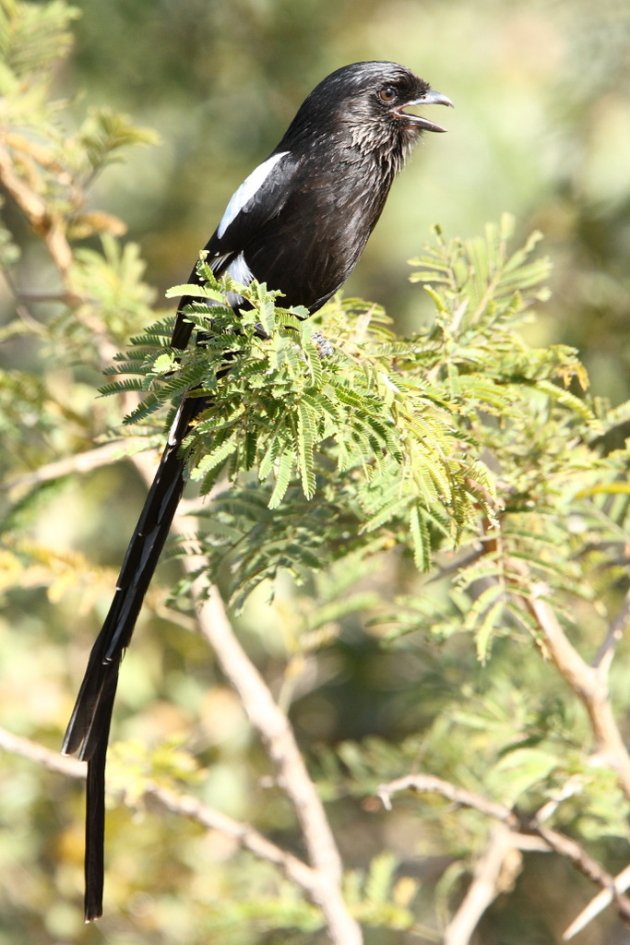
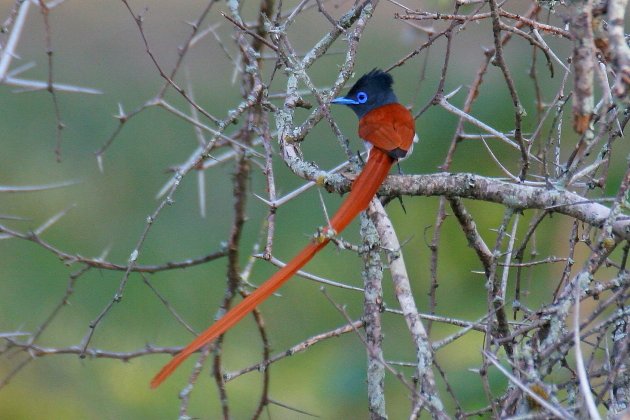











Thank you, Adam…what can we say! WOW!!! Why would anyone want to be a Chartered Accountant!!?? OK…they might need to fund their birding, but really…….
LOVE the photos!! Especially the photo of the Red-faced Mousebirds
Thanks Clare & Grant! Agree on the Chartered Accountant part, gave it up 15 years ago to bird the world instead!
Thanks also Erika, glad to hear you enjoyed the images!
Thank you for these stunning photos! What amazing birds! I think the Resplendent Quetzal and the Paradise Flycatcher would be the ones I’d like to see the most.
I so want to see a paradise flycatcher. Great post, Adam!
Hey nice and so beautiful images thanks
Than you for the images. Saw this orange bird with long tail in my garden this morning but I was too slow with my camera. Looked up on the internet and came across your site. It was definitly the “Paradise Flycatcher” Thank you for posting tese pics. Durban South Africa
Thanks for sharing your pictures Adam! I started bird watching only this past December and these kinds of photos are what inspire me to keep doing it. Got to love the birds we see in here in SA!
Adam, thank you for the beautiful pics. I saw the orange flycatcher behind my office in the middle of Harare! Couldn’t stop wandering what it’s called!
Well well i like birding i learned from college in Tanzania but i didnt know the long tailed birds i could mention some if i could be asked so for your information it very helpful to me than alot.
excellent photograph
i got a bird brown and a long tail it will not fly someone pls help me 0620597618 pls help me tanx
I have a red faced mousebird that won’t fly after it flew into our window. Its two long tail feathers came out when trying to save it from flying into the windows again. When if tries to fly it just falls over forward, is this because of the missing tail feathers do you think?
I have it in a birdcage for now as not sure what to do with it or how to treat it? Please help.
Hi Justin – I suggest taking the mousebird to your nearest CROW, Freeme, SPCA or vet. Good luck Adam